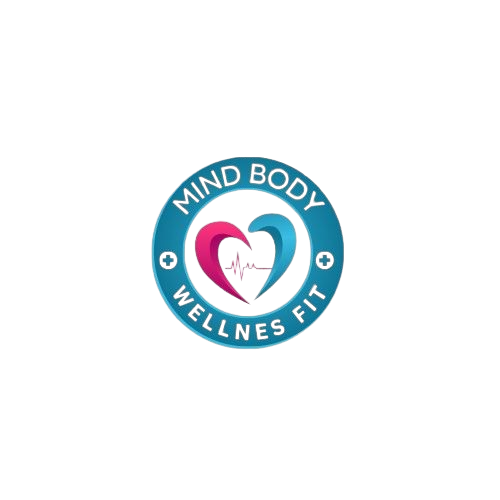Shoulder injuries are common, affecting people of all ages and activity levels. Whether you’re lifting heavy objects at work or throwing a ball during a weekend game, shoulder pain can quickly limit your ability to function. Your shoulders are the most mobile joints in your body, but this flexibility also makes them prone to injury. Timely treatment is crucial to prevent further damage and speed up recovery. In this guide, we will explore the most common shoulder injuries and their treatments, so you can better understand how to manage pain and restore mobility.
Understanding Shoulder Injuries
The shoulder joint, known for its wide range of motion, allows us to perform numerous daily activities. However, the very mobility that makes it essential for tasks such as lifting, reaching, and throwing also makes it vulnerable to injury. Shoulder injuries can occur due to a variety of factors, including overuse, trauma, and age-related wear and tear. These injuries range from mild strains to severe tears, and untreated injuries can lead to chronic pain and decreased functionality.
Types of Shoulder Injuries and Conditions
Rotator Cuff Tears
The rotator cuff is a group of muscles and tendons that stabilize the shoulder joint. Rotator cuff tears can occur due to injury or gradual degeneration over time. Acute tears usually result from trauma or a sudden movement, whereas degenerative tears develop slowly due to repetitive motion or aging. Symptoms include pain, weakness, and difficulty lifting the arm.
Treatment options: Conservative treatments such as physical therapy, anti-inflammatory medications, and rest are often effective for mild to moderate tears. Severe tears may require surgical repair.
Tendinitis
Shoulder tendinitis occurs when the tendons in the shoulder become inflamed due to repetitive use or overuse. It’s common among individuals who engage in overhead activities, such as athletes or workers who perform repetitive motions. Tendinitis leads to pain, swelling, and difficulty moving the shoulder.
Treatment methods: Rest and anti-inflammatory medications are usually the first line of treatment. Physical therapy can also help reduce inflammation, improve flexibility, and strengthen the shoulder.
Shoulder Dislocation
A shoulder dislocation happens when the ball of the shoulder joint (humerus) slips out of the socket (glenoid). This typically occurs from a fall or trauma. Dislocations are often associated with other injuries, such as damage to the rotator cuff or ligaments.
Immediate treatment: The dislocated shoulder must be manually repositioned (reduced) by a healthcare professional. After reduction, the shoulder may need to be immobilized for a period of time, and physical therapy is essential for restoring mobility.
Arthritis
Arthritis in the shoulder can be either osteoarthritis or rheumatoid arthritis. Osteoarthritis typically occurs due to aging and wear-and-tear of the cartilage in the shoulder joint, while rheumatoid arthritis is an autoimmune disorder that attacks the joint lining, leading to pain, swelling, and reduced function.
Treatment options: Osteoarthritis may be managed with pain medications, physical therapy, and joint injections. Rheumatoid arthritis is treated with medications that target the immune system. In some cases, surgical options like joint replacement may be necessary.
Impingement Syndrome
Shoulder impingement happens when the tendons of the rotator cuff get pinched between the bones in the shoulder joint. It can result from repetitive overhead motions, poor posture, or age-related degeneration.
Symptoms: Pain when lifting the arm or reaching overhead is common. In some cases, you may experience weakness in the shoulder.
Treatment options: Non-surgical treatments include physical therapy to strengthen the muscles around the shoulder and reduce pressure on the tendons. Steroid injections may also provide temporary relief.
Frozen Shoulder (Adhesive Capsulitis)
Frozen shoulder is a condition characterized by pain, stiffness, and a limited range of motion in the shoulder joint. It usually develops slowly and is often associated with prolonged immobility or injury. The shoulder becomes “frozen” as the capsule surrounding the joint thickens and tightens.
Treatment options: Physical therapy is the primary treatment, focusing on stretching and strengthening the shoulder. In some cases, corticosteroid injections or surgery may be required to improve range of motion.
Non-Surgical Treatment for Shoulder Injuries
Most shoulder injuries can be treated without surgery. The first step in treatment is often rest, allowing the shoulder to heal. Physical therapy is vital for strengthening muscles, improving flexibility, and restoring range of motion. Medications, such as NSAIDs (Nonsteroidal anti-inflammatory drugs), can help manage pain and reduce inflammation. Ice and heat therapy can also provide temporary relief from pain and swelling.
Lifestyle adjustments, such as modifying activity levels or using proper posture, can prevent aggravating the injury.
When is Surgery Needed for Shoulder Injuries?
In some cases, shoulder injuries may require surgical intervention. Surgery is usually considered when non-surgical treatments have not been successful or if the injury is severe. For example, large rotator cuff tears or dislocations with soft tissue damage may require surgical repair.
Recovery after surgery typically involves rest, physical therapy, and a gradual return to activity. Surgery options include arthroscopic techniques, which are minimally invasive and lead to faster recovery times.
Preventing Shoulder Injuries
Prevention is always better than treatment. Strengthening exercises for the shoulder muscles, maintaining good posture, and avoiding overuse can go a long way in preventing injuries. Athletes, in particular, should ensure they warm up and cool down properly to protect their shoulders. Taking breaks and using proper techniques when lifting or engaging in repetitive tasks can also help reduce the risk of injury.
The Role of Physical Therapy in Shoulder Injury Recovery
Physical therapy plays a crucial role in shoulder injury recovery. Studies have shown that physical therapy can produce results equal to surgery for many non-traumatic rotator cuff injuries. A skilled physical therapist can design a personalized program to help restore shoulder strength, flexibility, and function, reducing the need for surgical intervention.
Takeaway
Shoulder Injuries Treatment, from rotator cuff tears to frozen shoulder, can cause significant pain and hinder daily activities. Understanding the causes and treatment options for each type of injury can help you find relief and restore function. Whether through physical therapy, medication, or surgery, the right treatment plan is essential for recovery. Early intervention and consistent care can make all the difference, so don’t hesitate to consult a healthcare provider if you’re experiencing shoulder pain.






